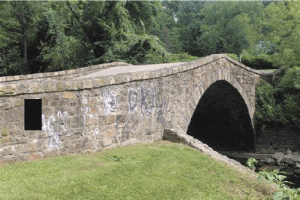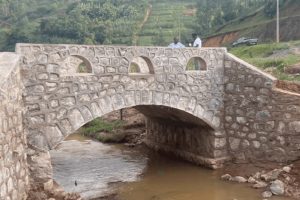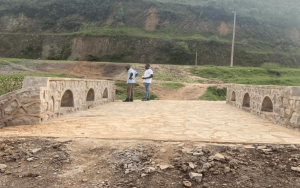In many parts of rural Rwanda, communities struggle to access essential services like healthcare, education, and trade due to a lack of durable infrastructure. Without proper roads and bridges, villages can be cut off from neighboring towns, especially during the rainy season. However, sustainable infrastructure solutions can unlock immense opportunities for economic growth, improved quality of life, and long-term development.
The Importance of Sustainable Infrastructure
Sustainable infrastructure refers to projects designed to be durable, cost-effective, and environmentally friendly. These projects use local resources and skills, helping communities not only to meet their immediate needs but also to build a foundation for future development.
In rural areas, the absence of such infrastructure is one of the biggest barriers to economic growth. When people cannot move freely due to impassable roads or broken-down bridges, they are cut off from markets, schools, and healthcare services. Sustainable infrastructure can change that, empowering communities and giving them the tools to thrive.
The Role of PEIS in Building Sustainable Solutions
At Partners in Engineering for Impact Sustainability (PEIS), we specialize in providing low-cost, durable infrastructure that addresses these challenges. Our approach involves working closely with local communities, training them in sustainable building techniques, and using locally-sourced materials. This ensures that the infrastructure we create not only solves immediate issues but is also sustainable in the long run.
Our projects focus on connecting people and improving access to critical services, which in turn leads to job creation, economic empowerment, and better living standards. By collaborating with local governments and communities, we are building a future where everyone has the opportunity to prosper.
Case Study: Bringing Change to the Village of Nyakabanda
The village of Nyakabanda, nestled in Rwanda’s remote, mountainous region, had long faced isolation. With no reliable infrastructure connecting them to nearby towns, villagers were often cut off from essential services like healthcare, education, and trade—especially during the rainy season when rivers swelled and became impassable.
The Problem:
For years, the community had been using a makeshift bridge—little more than wooden planks across the river. This was dangerous and often washed away during heavy rains. Children couldn’t attend school regularly, traders struggled to reach markets, and accessing medical services was a constant challenge.
PEIS’s Solution:
PEIS partnered with local leaders and residents to build a durable, low-cost stone arch bridge that would serve as a permanent solution to their connectivity problems. This bridge was constructed using locally-sourced stone and sand, with a design that could withstand the river’s flow during the rainy season.
Key steps in the project included:
- Community Consultation: PEIS held workshops with village leaders and residents to understand their challenges and ensure the solution met their specific needs.
- Training Local Workers: PEIS provided training for local craftsmen in sustainable construction techniques, ensuring that the skills used to build the bridge would remain in the community.
- Using Local Materials: By sourcing materials like stone from nearby quarries, the project reduced transportation costs and minimized its environmental footprint.
The Impact:
Upon completion, the stone arch bridge changed the daily lives of Nyakabanda’s residents:
- Increased School Attendance: Children now walk safely across the bridge, allowing them to attend school year-round without interruptions caused by dangerous river crossings.
- Boosted Trade: Local farmers and artisans now transport their goods to the market faster and more efficiently, increasing their income.
- Improved Healthcare Access: Villagers now have easier access to nearby clinics and hospitals, reducing the time it takes to reach medical care during emergencies.
“This bridge has brought us hope,” says Dativa, a mother of three who previously had to navigate the dangerous old bridge. “We no longer live in fear when it rains. We can get to the market, the children are in school, and life feels more secure.”
Economic Growth and Future Opportunities:
Since the completion of the bridge, Nyakabanda has seen a surge in economic activity. More traders are visiting the village, and local entrepreneurs are exploring new business opportunities. The bridge has become a symbol of resilience and progress for the community, and PEIS is now working on expanding similar projects to other villages in the region.
How Sustainable Infrastructure Boosts Economic Growth
- Improved Access to Markets
With durable roads and bridges, communities can transport goods and services more efficiently, allowing local businesses to thrive. - Job Creation
Sustainable infrastructure projects create job opportunities for local residents, empowering them with skills that continue to benefit the community long after the project is completed. - Access to Essential Services
With better infrastructure, communities have greater access to healthcare, education, and emergency services, leading to improved quality of life.
Why PEIS Is the Right Partner for Your Sustainable Infrastructure Project
PEIS takes a unique approach to building sustainable infrastructure. We believe in:
- Community Involvement: Every project we undertake begins with understanding the specific needs of the community, ensuring our solutions are tailored to make the most significant impact.
- Sustainable Design: We focus on using local materials and training local workers, creating projects that are environmentally friendly and economically viable for the long term.
- Proven Results: From bridges to schools and healthcare centers, our projects are making a real difference across Rwanda’s rural communities.
If you’re looking to improve the lives of people through sustainable infrastructure, PEIS is here to partner with you. Our projects don’t just create physical connections—they create opportunities for economic growth, education, and a better future.
Conclusion: Building a Brighter Future for Rwanda’s Rural Communities
By focusing on sustainable infrastructure, we can ensure that communities across Rwanda are empowered to grow and thrive. Whether it’s building roads, bridges, or essential service centers, PEIS is committed to making a lasting impact on rural areas, helping to drive economic growth and improve lives.
If you’re interested in partnering with PEIS to bring sustainable infrastructure to more communities, contact us today and let’s build a brighter future together.



